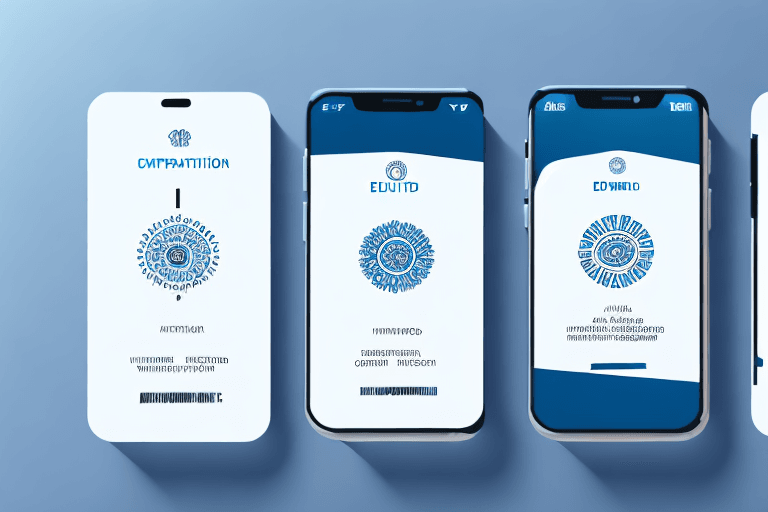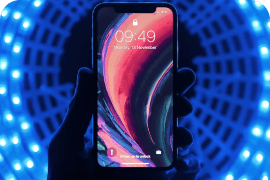eSIM
What is ICCID, and why is it important in mobile technology?
Understanding ICCID and its role in mobile technology
In the world of mobile technology, there are countless acronyms and technical terms that are being thrown around, and it could be potentially overwhelming for those who are new to this space. In our previous blogs, we talked about APN and EID. Today, let's take a look at what ICCID is and the role it plays in mobile communication.

Understanding the Basics of ICCID
What is ICCID?
Before we delve into the intricacies of ICCID, let's start with its definition. ICCID stands for Integrated Circuit Card Identifier. Simply put, it is a unique numerical code that identifies a SIM card in a mobile device. The ICCID is typically printed on the SIM card itself or can be found in the device settings menu.
Now, let's take a closer look at the structure of an ICCID. This 19 to 20-digit number is divided into three parts. The first part, known as the Issuer Identification Number (IIN), represents the organization that issued the SIM card. The IIN is a six-digit number that is assigned by the International Telecommunication Union (ITU). Each mobile network operator is assigned a unique IIN, allowing for easy identification of the issuing organization.
The second part of the ICCID is referred to as the Individual Account Identification (IAI). This part of the code is used to identify the specific account or user associated with the SIM card. The IAI can vary in length, depending on the mobile network operator. It is important to note that the IAI is not standardized and can differ between different operators and regions.
Lastly, the third part of the ICCID is the checksum digit. This single-digit number is used for verification purposes. It is calculated using a specific algorithm, which ensures that the ICCID is valid and has not been tampered with. The checksum digit provides an extra layer of security and helps prevent unauthorized use of SIM cards.
It is worth mentioning that the ICCID is not to be confused with the IMSI (International Mobile Subscriber Identity). While both codes are used to identify SIM cards, the ICCID is specific to the physical card, whereas the IMSI is associated with the subscriber's account.
ICCID and SIM card management
An ICCID serves as a unique identifier for a SIM card. Every SIM card has its own ICCID, enabling mobile networks to accurately associate the SIM card with a specific user or account. This identification is crucial for a variety of purposes, including network authentication, billing, and provisioning of services.
When a SIM card is manufactured, it is assigned a unique ICCID that is stored in its memory. This ICCID is then used by the mobile network to identify and authenticate the SIM card when it is inserted into a mobile device. The ICCID allows the network to verify that the SIM card is valid and authorized to access the network.
Additionally, the ICCID is used for billing purposes. When a user makes a call, sends a text message, or uses data on their mobile device, the mobile network uses the ICCID to track and record the usage. This information is then used to generate the user's monthly bill.
Furthermore, the ICCID is essential for the provisioning of services. Mobile networks use the ICCID to determine which services and features should be available to a specific SIM card. During the activation process, the ICCID is used to link the SIM card to the subscriber's account. This ensures that the correct services and features are provisioned to the user's device.
In terms of troubleshooting, the ICCID can be helpful in diagnosing network connectivity issues. By analyzing the ICCID, network engineers can identify the specific SIM card and investigate any potential problems or errors. This information can be invaluable in resolving technical issues and ensuring a seamless user experience.
Furthermore, the ICCID is also used in SIM card cloning detection. Since each ICCID is unique, any attempt to clone a SIM card will result in a mismatch between the original and cloned ICCID. This serves as a security measure to prevent fraudulent activities and unauthorized SIM card duplication.
Do eSIMs have ICCID?
If an ICCID is assigned to a physical SIM card, perhaps a question that you might have would be whether or not an eSIM has an ICCID.
The short answer is that it does. Every eSIM profile has an ICCID that is assigned to it, and just like how it would be when assigned to a SIM, this ICCID number is unique to your eSIM and is used to validate and identify the eSIM. The ICCID is a crucial component in helping to verify and authenticate your eSIM, and is required to establish a connection with the network operators.
Where do I find the ICCID for my eSIM?
On a physical SIM, your ICCID is printed on the SIM card itself. Without the physical card, how should you retrieve this ICCID? There are ways you can do so on your device.
Finding the ICCID on your iPhone
- Navigate to Settings > General > About
- Scroll down to the eSIM profile that you want to obtain the ICCID for, and you should be able to find the number
Finding the ICCID on your Pixel
- Go to Settings > About Phone
- Tap SIM Status to see the ICCIDs for your active eSIMs.
Finding the ICCID on your Samsung
- Go to Settings > Connections > SIM Manager
- Select your eSIM.
- Select More Information to see the ICCID for the eSIM.



